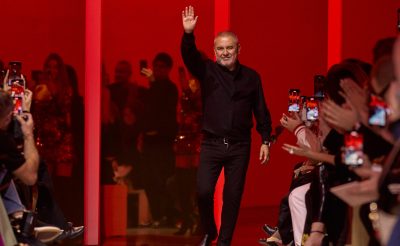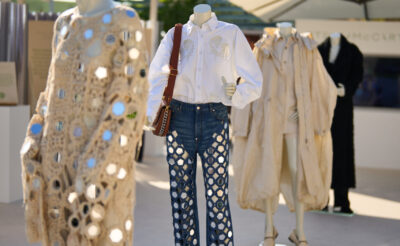Innovation has always been the backbone of fashion, but is a more eco-conscious effort across the industry forcing change when it comes to the design process – the function of fashion itself – and ultimately the future of season-led trends in the Middle East and beyond? Can fashion still provide its aspiration and escapism?
Over the past year, sustainability in both the literal and figurative sense has arguably become the biggest trend in fashion, with designers in the region and further afield taking an introspective approach with regards to both their function and future in these challenging and unprecedented times.
With ‘longevity’ the word on everyone’s lips, is the capsule, season-less collection the way forward, especially in a climate that doesn’t experience seasons as the fashion capitals do? And is that the only way for consumers to move away from overconsumption? And on a practical level, how are designers modifying their production practices and tackling the dichotomy between newness and need without it impacting on the design process and their artistic expression in the process?
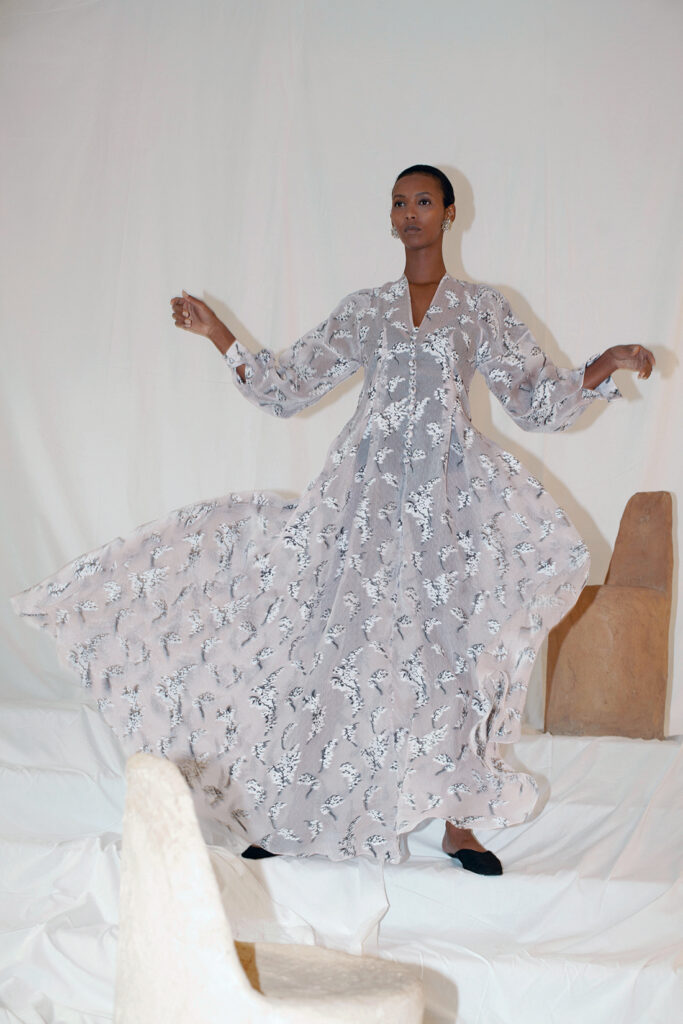
Sandra Mansour
Designer Sandra Mansour argues that there will always be a way for designers to adopt more sustainable production practices while also protecting the ideas of escapism and individualism and not changing their aesthetic. “As a niche and luxury brand, we mostly produce on demand, with no excess stock. We usually create collections using a lot of natural fibres such as cotton, linen, or deadstock fabric. I’m actively looking for new, innovative and eco-friendly textiles. I also think that you can express eccentricity, escapism and individualism through a colour, a pattern, a print, a silhouette or an embroidery. Fashion speaks a unique language. There are many ways to express yourself and still be ethical. Those three concepts can go hand-in-hand with sustainability, you just have to be creative and think outside the box.” This year, the Swiss-born, Lebanese Mansour made history when she became the first Arab designer to collaborate with fast-fashion giant H&M on a capsule collection of dresses, separates, hoodies and accessories in her signature dreamy style, a process she describes as “amazing” because it has allowed the brand to expand its reach and “be more inclusive, accessible and offer more Sandra Mansour to people.” She explains: “The idea behind a capsule collection is to create a wardrobe that features only the most essential pieces from a collection while still expressing the creative vision of the designer and using signature codes. To reimagine and modernise a classic in a limited collection still requires a lot of creativity. Fashion reflects time and society; it is relevant to contemporary culture. I think the creative process should reflect the current times. And the sanitary crisis due to Covid-19 has forced us, somehow, to dress down, to go back to basics and classics, to wear clothes that can be more functional. The industry is a space to grow but it is also cyclical – things come and go; you just need to go beyond creative boundaries and reinvent something totally new with something old.”
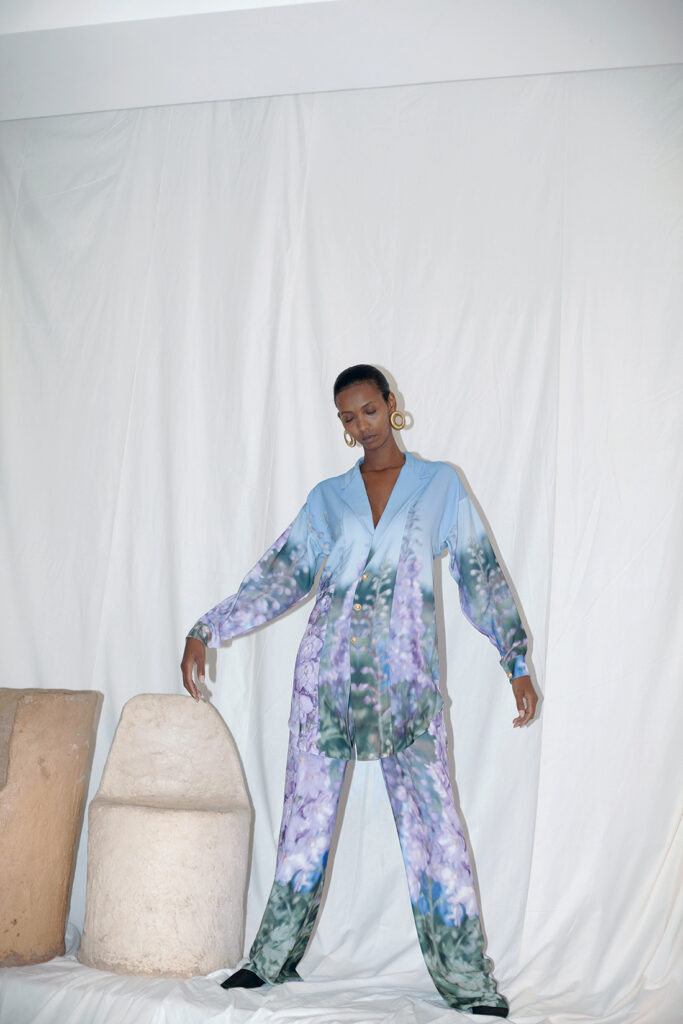
Sandra Mansour
Her point of view is shared by SemSem founder Abeer Al Otaiba. The New York-based label, which is now available online in the region via Farfetch.com, has become synonymous with timeless, flattering silhouettes, with the brand’s one-shoulder pleated dress becoming a trademark signature piece in every collection. “As a luxury brand, we aim to create timeless, elegant pieces that flatter women regardless of the region where they reside,” Al Otaiba says. “I believe women who follow and love SemSem buy our clothes because we provide a unique perspective that meets our customers’ needs instead of a specific trend. We want our customers to cherish our products for a lifetime, which is why we prioritise incredible quality.” She adds: “Sustainable practices don’t impact our ability to show unique collections. We believe it’s important to evolve and provide our community with what they want in a way that’s ethical and sustainable. We have a sustainability-focused approach to production in place and continue to develop best practices. Things such as recycling textile waste, avoiding excess inventory, and choosing fabrics from sustainable sources have become key aspects of our fabrication process.”
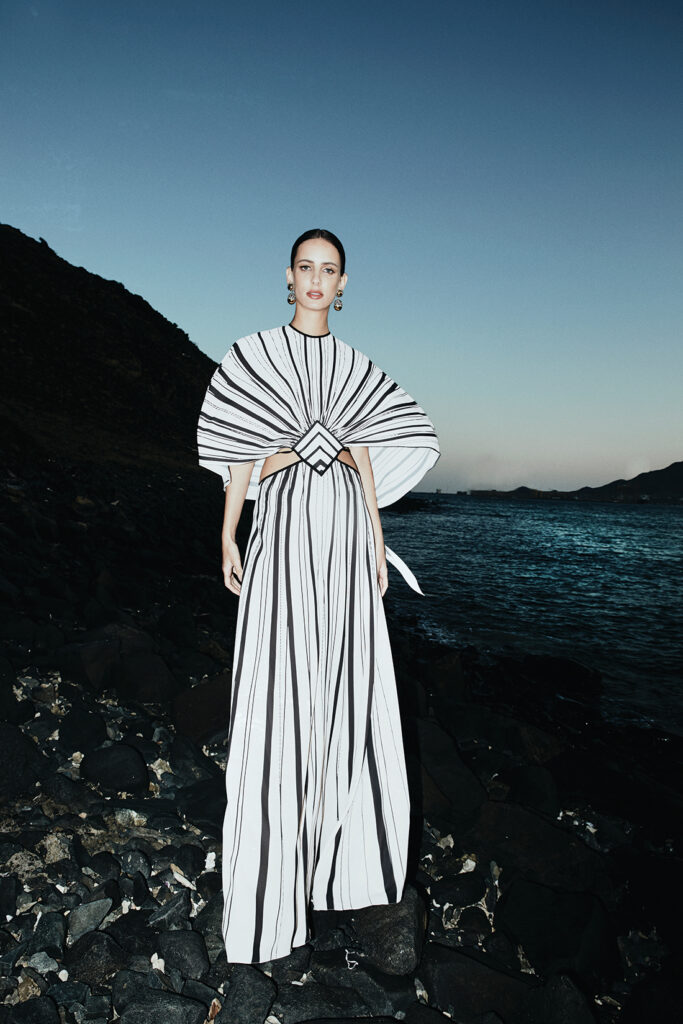
Yasmine Yeya
Designer Yasmine Yeya of acclaimed Dubai-based couture house Maison Yeya has for the first time in her career branched out into RTW with her new Yeya 365 line. The collection, which is “dedicated to 365 days of summer,” is reflective of Yeya’s ongoing efforts to produce more sustainably, while also staying true to her couture roots. She explains: “Many factors at play inspired the creation of this collection. First, with the pandemic, there was definitely a shift in consumer demand; and because I’ve always wanted to get into ready-to-wear, it felt like the perfect time to do it. With this line, I wanted to address a regional need by catering to a year-round summer. At the same time, I wanted to create a line fit for the multiple distinctive shapes of women, but also, a multifunctional reusable line that a woman can throw on whenever she is not feeling her best, and still feel and look great. So most of the pieces are fluid and free-formed.” She also believes that sustainability is a necessity if brands want to survive the pandemic and beyond. “The fashion industry is one of the top polluting industries in the world – especially with the ready-to-wear and fast- fashion sectors. As brands it is our responsibility to react, and fast Part of this reaction is her plan to launch an in-house initiative that will allow the brand to design and manufacture in a more eco-friendly manner. “I am really excited and hoping for the best,” she adds.
Dubai-based Zaid Farouki has taken this idea of the single season one step further by deciding to reveal his collections in an ad hoc manner, unrestricted by the fashion calendar. He says that the decision was directly influenced by environmental and climate concerns in the region, as well as cost. “It was an unsustainable and unachievable practice for a small business to follow the fashion calendars,” Farouki clarifies. “Our efforts to enhance the brand’s sustainability and environmentally friendly policies are a commitment to establish and uphold core values that the target audience and consumer connects with. Providing transparency of the ethical production and sustainability practices in the brand’s atelier or outsourced to local manufacturers via social media, as well as product designing and manufacturing in-house to reduce logistics, transportation costs and shortened lead times, are both parts of the brand’s ongoing sustainability practices.”
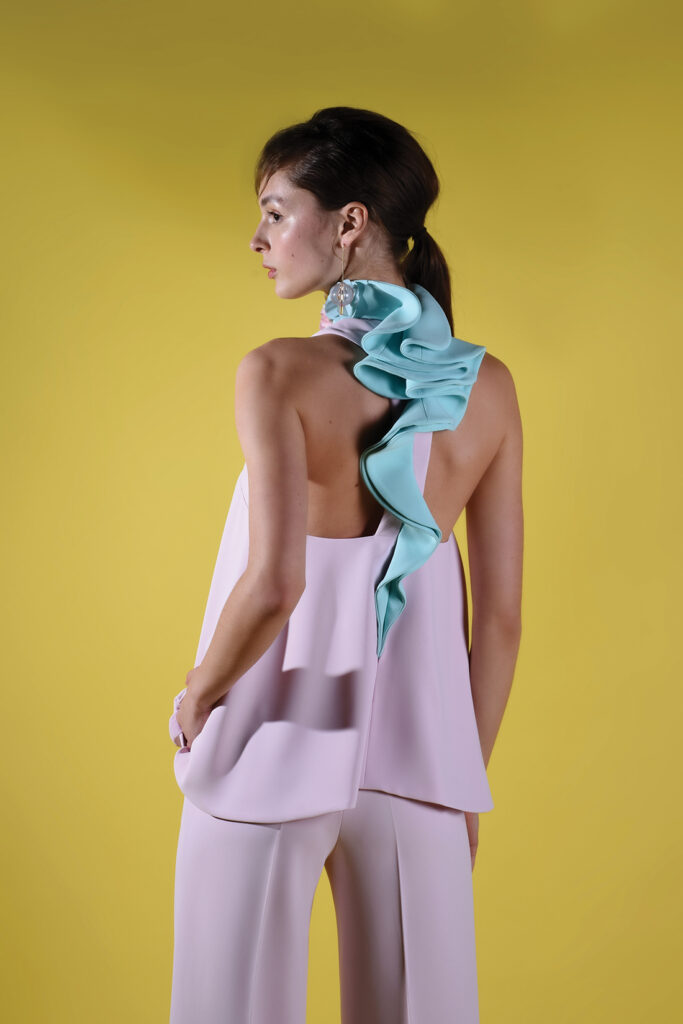
Azzi & Osta
And while a (hopefully momentarily) bygone era of racking up air miles playfully informs the Azzi & Osta Spring Summer 2021 collection, which is based on the vintage American travel magazine Holiday, the Beirut-based design duo is avoiding excess by tapping into its haute couture sensibilities and supplying on demand with its recently launched online pre-order function. “Several drivers affected this decision,” they explain. “It has always been part of our main credo to create consciously, which is why we only produce on demand, buy on demand, don’t use animal skin, recycle unused fabrics, work with local artisans, and produce locally to limit our carbon footprint. So this approach relates perfectly with the brand values, and all the challenges that the world is facing, and encourages more awareness of slow fashion and all the ways it benefits our environment.”
The designers also believe the pre-order model ensures less waste, promotes timelessness, and puts craftsmanship and quality at the forefront of the shopping experience. And this kind of forward planning has allowed them to keep their highly decorative, ornate brand intact. “Sustainability is a value not a trend, meaning we adapt the processes and fabric research and designs to our values without changing the brand’s DNA or storytelling. Being designers, we control our narrative; we just adapt the means to reach it.”
Natalie Kingham, Global Fashion Officer at MatchesFashion.com echoes this sentiment and posits that trends will continue to emerge as there is still an enthusiasm for newness. However, she believes this will be countered with a desire for timeless pieces, which can be kept and worn for years to come. “The importance of a capsule wardrobe has risen over the past year due to the new way in which we are living, and our everyday uniform has evolved towards a more relaxed, modern way of dressing,” she suggests. “In reflection, we launched our Wardrobe Foundations edit in January with both practicality and versatility in mind. [It consists of] building-block pieces to base any outfit around that are also trans-seasonal to ensure we cater to our global customer. We focused on fit, form, function, silhouette and fabrication. We felt it was important to address both quality and longevity by including items in the edit which are crafted from luxe fabrications and natural materials so we know that these items will last in our customer’s forever wardrobe, whether that be an organic cotton trench coat from Another Tomorrow or a beautiful off-the-shoulder cashmere blend dress from Gabriela Hearst.” She also observes that shoppers now enjoy the journey of discovering how garments are made, and they want to know more about craftsmanship and responsible production methods. “There has certainly been a shift towards customers wanting more visibility on the items that they are investing in. As a result, designers are being more mindful – listening to their customers and producing products with both quality and longevity. It’s great to see a rise in brands who put sustainability at the forefront of their collections,” she adds.
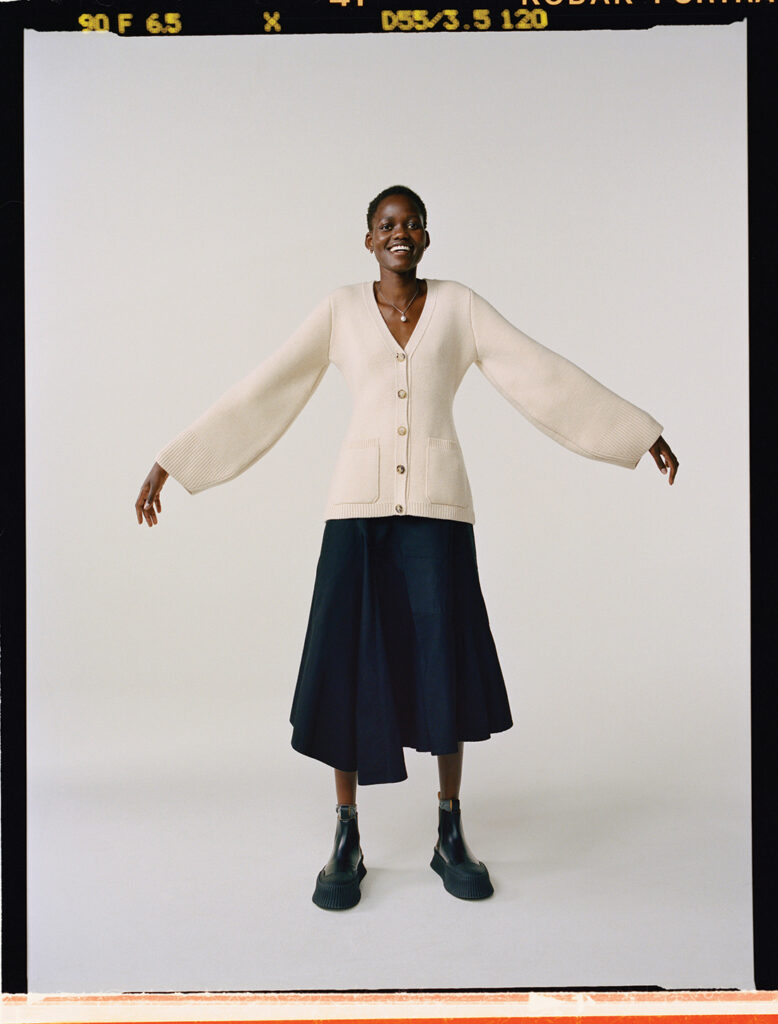
The MatchesFashion Wardrobe Foundations Edit
Closer to home, The Middle East Fashion Council (MEFC) has positioned itself as the world’s first fashion council with sustainability as its core value, and is hosting a three-day sustainable fashion forum in Dubai’s Sustainable City in April to highlight the United Nations’ Sustainable Development Goals, and discuss how the region can tackle the issues facing the industry. Founder and CEO of MEFC Simon J Lo Gatto feels that this pivotal moment provides the perfect opportunity for designers to re-examine and revolutionise the industry, at home and abroad, and offer consumers escapism in a different way. “Sustainability has already changed the way brands design and plan their new collections, and it will further influence a garment’s entire production process. The design stage, including a proper preceding market research on materials, patterns and suppliers, mostly defines a garment’s sustainability level. Designing sustainably means considering the environmental impact of the final piece of textile during its entire lifecycle. As materials vary heavily in terms of their carbon footprint and other impacts on the environment, being aware of all materials available to the market before starting your first sketch is vital,” he says. He also believes that the slowing down of the cyclical nature of fashion, particularly among luxury brands, lends itself perfectly to sustainability, while also challenging designers and fashion houses to innovate in other ways. “Isn’t a more sustainable supply chain that processes fancy and futuristic fibres as well as using more environmentally friendly manufacturing practices such as alternative energy sources and the lowest amount possible of chemical input a great symbol for a futuristic and unique fashion brand?” he proposes. It’s an attitude – and aspiration – that’s hard to argue with.
Read Next: How Saudi Designer Yasmina Qanzal Is Protecting The Planet
- Words by Aoibhinn Mc Bride



